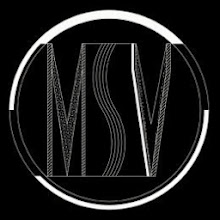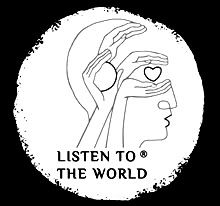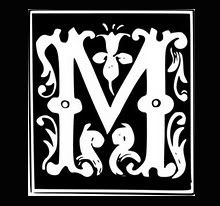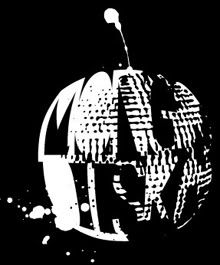
Friday, February 26, 2010
Sunday, February 14, 2010
COMING SOON

Friday, 5th March 2010
at Rossi Building
RAT-A-TAT-TAT n.
a series of short sharp noises (as made by strokes on drum or knocks on a door)
Saturday, February 6, 2010
The History of Psychedelic Rock
Psychedelic music covers a range of popular music styles, genres and scenes, that may include psychedelic rock, psychedelic folk, psychedelic pop, psychedelic soul, psychedelic ambient, psychedelic trance, and others. Psychedelic rock is also commonly called acid rock. Psychedelic music can occur in almost every genre of music, including classical Western art music. Psychedelic rock is a style of rock music that is inspired or influenced by psychedelic culture and attempts to replicate and enhance the mind-altering experiences of psychedelic drugs. It emerged during the mid 1960s among garage and folk rock bands in Britain and the United States. Psychedelic rock bridged the transition from early blues-based rock to progressive rock, art rock, experimental rock, hard rock and eventually heavy metal. It also drew on non-Western sources such as Indian music's ragas, drone and sitar.
 Psychedelic rock evolved in the 60s as an offshoot of the rock and roll movement combining elements of rock, electronic music, eastern influences - particularly sitars, and other diverse elements. Inspired by the use of mind altering drugs like cannabis, mescaline, psilocybin, and especially LSD, psychedelic rock broke with traditional rock and laid the roots for Krautrock and experimental rock genres of the seventies and eighties. In 1965-1967, The Beatles also were recording psychedelic rock with tracks like "Lucy in the Sky with Diamonds" and "Tomorrow Never Knows" to name a few, but were not strictly classified as psychedelic rock. Cream and Pink Floyd (with original founder Syd Barrett) embraced psychedelic music fully becoming two of the first truly psychedelic bands.
Psychedelic rock evolved in the 60s as an offshoot of the rock and roll movement combining elements of rock, electronic music, eastern influences - particularly sitars, and other diverse elements. Inspired by the use of mind altering drugs like cannabis, mescaline, psilocybin, and especially LSD, psychedelic rock broke with traditional rock and laid the roots for Krautrock and experimental rock genres of the seventies and eighties. In 1965-1967, The Beatles also were recording psychedelic rock with tracks like "Lucy in the Sky with Diamonds" and "Tomorrow Never Knows" to name a few, but were not strictly classified as psychedelic rock. Cream and Pink Floyd (with original founder Syd Barrett) embraced psychedelic music fully becoming two of the first truly psychedelic bands.Psychedelic music could also be interpreted as simply a "surreal and dreamy feeling" in a particular song, instead of a specific genre with rules to follow. In some cases, this simply requires writing one coherent song, then to experiment recording that song in the studio while under "psychedelic influence", yielding very surreal musical results. A classic example of this method is "Bass Strings", by Country Joe And The Fish. This early track, written and recorded by Country Joe and the rest of his band in 1966, was obviously an upbeat, hasty, and offensive song of protest in a raw jug band influenced style. In 1967, this song changed dramatically, not to meet more contemporary commercial standards, but rather to re-record it as an experimental track while under the influence of LSD. The new psychedelic result was clearly self-evident in Country Joe's first studio album ("Electric Music for the Mind and Body") when "Bass Strings" featured a much slower tempo, delayed vocals, added reverb, studio reversed cymbals, electric organ, desert traveler lyrics, and a continuous blues guitar solo which together make this song a very, in the true sense of the word, "psychedelic" track.
The Jefferson Airplane website states that (the album), "After Bathing at Baxter's" was the group's attempt to capture what the psychedelic experience sounded and felt like to them from the inside." Jimi Hendrix is also renowned for his talent and guitar virtuosity being able to emulate the psychedelic experience.
 Jimi Hendrix
Jimi HendrixThe psychedelic musical style typically features:
- electric guitars—12-strings being preferred for their 'jangle
- elaborate studio effects, such as backwards taping, panning (sound placement in the stereo field), phasing, long delay loops, and extreme reverb
- exotic instrumentation, with a particular fondness for the sitar and tabla
- a strong keyboard presence, especially Hammond, Farfisa, and Vox Organs, the Rhodes electric piano, Harpsichords, and the Mellotron (an early tape-driven 'sampler')
- a strong emphasis on extended instrumental solos
- modal melodies and surreal, esoterically-inspired, or whimsical lyrics;
- in contrast with earlier forms of rock, lyrical themes were often existential, spiritual or literary in nature: e.g., White Rabbit by Jefferson Airplane is based on the novel Alice in Wonderland.
Subscribe to:
Posts (Atom)















